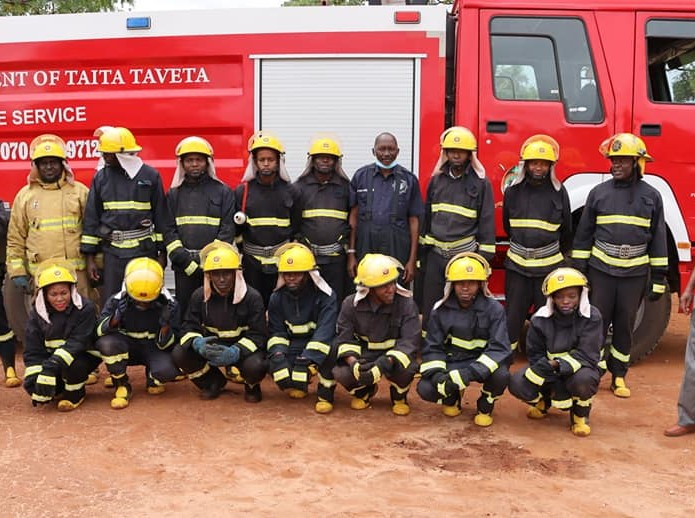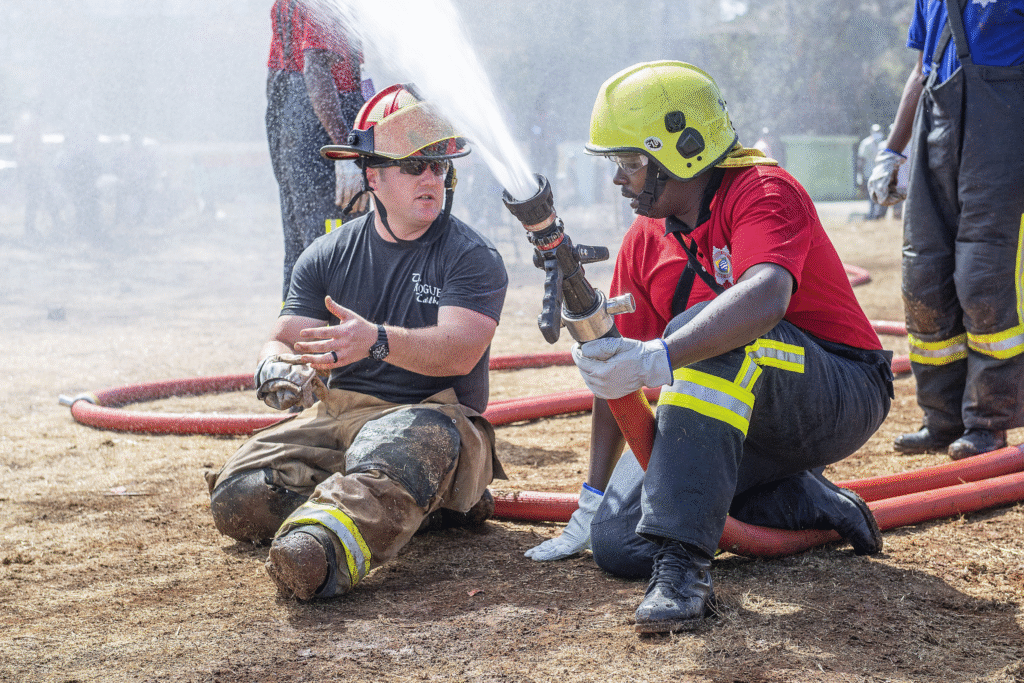
Introduction
Rescue and Firefighting Services (RFFS) are a cornerstone of aviation safety, ensuring rapid response to aircraft incidents and safeguarding lives during emergencies. In East Africa, where aviation is rapidly expanding, the readiness and capacity of RFFS units have come under scrutiny. Despite regulatory guidelines by the International Civil Aviation Organization (ICAO), varying levels of investment, training, and infrastructure continue to shape the effectiveness of these critical services across the region. This article evaluates the current status of RFFS in East African airports, outlines key challenges, and identifies opportunities for strengthening emergency response systems in alignment with global standards.
Regulatory Framework and ICAO Standards
ICAO requires all certified airports to maintain a minimum level of firefighting capability, based on the size and type of aircraft operating at the facility. This includes sufficient numbers of trained personnel, appropriately equipped firefighting vehicles, and rapid response times—ideally under three minutes from the alert to arrival at any point on the runway.
In East Africa, Civil Aviation Authorities such as Kenya Civil Aviation Authority (KCAA), Uganda Civil Aviation Authority (UCAA), and the Ethiopian Civil Aviation Authority (ECAA) have adopted ICAO’s Annex 14 guidelines and incorporated them into national aviation laws. However, enforcement and implementation vary, especially at smaller domestic and regional airports that lack the funding and infrastructure of major international hubs.
RFFS Capabilities at Major Airports
At international gateways such as Jomo Kenyatta International Airport (Nairobi), Entebbe International Airport (Uganda), and Addis Ababa Bole International Airport (Ethiopia), RFFS operations are relatively advanced. These airports maintain ICAO-compliant equipment including high-capacity foam tenders, rescue tools, and trained firefighting personnel on 24/7 standby. Emergency drills, sometimes conducted in partnership with airlines and medical agencies, enhance readiness and inter-agency coordination.
Kenya’s KCAA has invested significantly in its fire academies, offering RFFS training that meets ICAO standards. In Ethiopia, the Fire and Emergency Prevention and Rescue Agency (FEPA) works alongside airport RFFS units to manage mass-casualty scenarios and major airport incidents. These institutions are increasingly incorporating simulation-based training and international certifications into their programs.
Challenges at Regional and Domestic Airports
In contrast, secondary airports and remote airstrips across East Africa often struggle to maintain adequate firefighting capabilities.
Factors contributing to these challenges include:
- Limited budgets for equipment procurement such as modern fire trucks, breathing apparatus, and foam agents.
- Inadequate staffing, with some airports relying on multi-tasked personnel who lack specialized firefighting training.
- Poor infrastructure, including inadequate water supply systems or emergency access roads.
- Aging equipment, some of which has exceeded its recommended operational lifespan and lacks spare parts.
For example, smaller airports in Tanzania and Burundi have reported difficulties in meeting ICAO’s minimum RFFS categories due to outdated fire vehicles and insufficient staffing. Similarly, in South Sudan, instability and funding constraints hinder investment in emergency response infrastructure, particularly at newly established or rehabilitated airfields.
Training and Human Resource Development

A key determinant of RFFS performance is the skill level of its personnel. Across East Africa, there is a growing emphasis on professionalizing firefighting roles within the aviation sector. National fire academies in Kenya and Ethiopia offer RFFS modules as part of their curriculum, while Uganda and Rwanda have begun partnering with international training institutions to upskill their emergency responders.
However, recurring challenges include:
- Language barriers and limited training materials, which reduce the accessibility of ICAO-compliant courses.
- Inconsistent certification and lack of refresher programs, especially in countries without dedicated aviation fire academies.
- Poor retention of trained staff, often due to low remuneration and high turnover rates in the public sector.
Some private-sector initiatives, such as training partnerships between airlines and airport operators, are beginning to address these gaps. Notably, Kenya Airports Authority (KAA) has developed a standardized RFFS training curriculum and regularly conducts multi-agency drills involving police, medical responders, and disaster management authorities.
Technology and Equipment Modernization
Modern firefighting depends on both manpower and specialized equipment. Larger airports in East Africa are investing in high-performance crash tenders with features such as infrared thermal imaging, electronic foam proportioning systems, and elevated water cannons. However, this level of sophistication is not yet widespread.
To bridge the equipment gap, some countries have sought donations and grants from ICAO, the African Development Bank, and bilateral partners. For instance, Rwanda has received support from China to modernize its airport fire units, while Uganda’s Entebbe International has upgraded its fire fleet with EU-backed funding.
Regional Collaboration and Policy Alignment
Regional bodies such as the East African Community (EAC) and the Civil Aviation Safety and Security Oversight Agency (CASSOA) play a growing role in harmonizing RFFS standards. Through periodic audits and peer assessments, these organizations encourage member states to identify weaknesses and adopt corrective measures.
Joint RFFS training programs and the establishment of regional emergency response protocols are gaining traction. CASSOA has proposed the creation of a shared database of certified RFFS personnel and equipment inventories to facilitate mutual aid during cross-border aviation emergencies.
Conclusion
Airport Rescue and Firefighting Services are fundamental to aviation safety, particularly in a region like East Africa where air travel is on the rise and infrastructure gaps persist. While major airports are making commendable strides in meeting ICAO standards, there remains a need to enhance capabilities at smaller facilities through investment in equipment, human resources, and policy enforcement. Strengthening RFFS across the region requires not only national commitment but also coordinated regional strategies, international support, and a sustained focus on capacity building.


